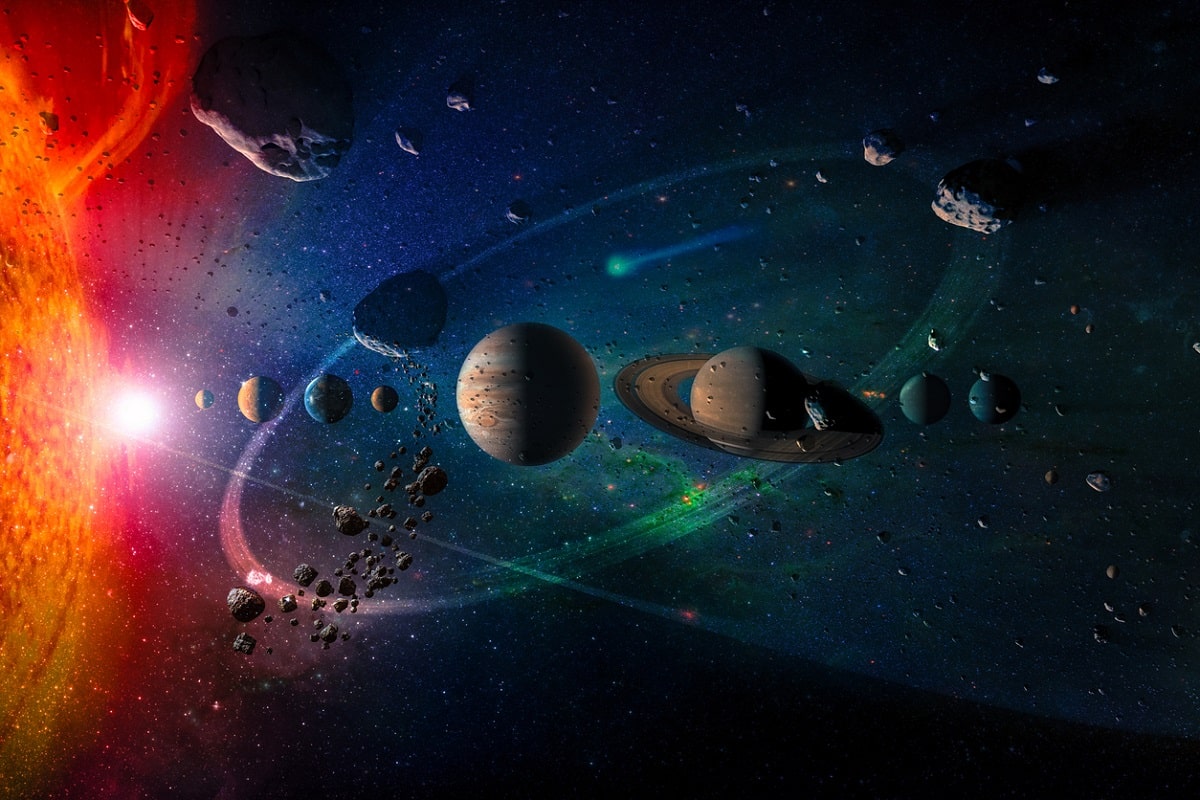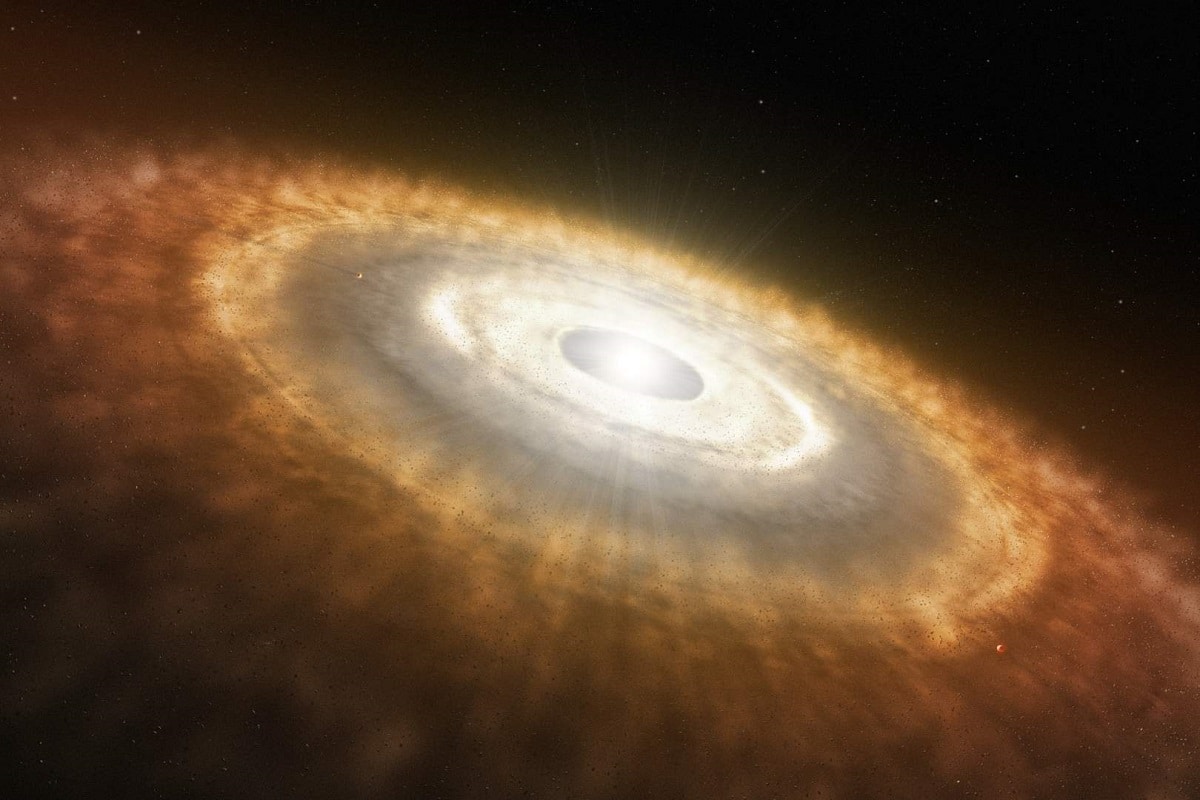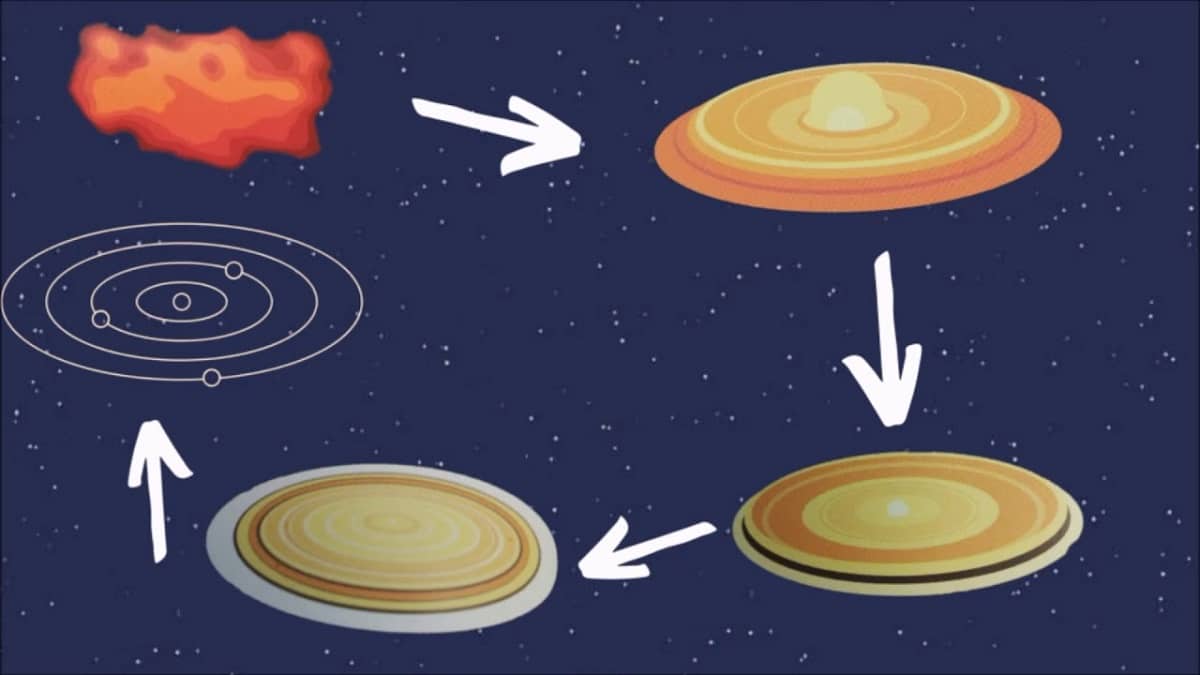
Since the solar system formed more than 4.500 billion years ago, it is difficult to know How did the solar system form. However, scientists have shuffled certain theories, some more valid than others, and a coherent type of formation has been established.
Therefore, we are going to dedicate this article to telling you how the solar system was formed and what steps occurred.
Solar system features

Like all other planetary systems, most of the solar system is empty space. However, around all these spaces there are many objects that are affected by the sun's gravity and form the solar system.
How could it be otherwise, the sun is the most important part of the solar system. It is at its center and all objects in the solar system are affected by its gravity. It is a G-type star, also known as a yellow dwarf, and is in the middle of its lifespan, at about 4.600 billion years old today. The sun is made up of three fourths hydrogen and one helium, it rotates on its own axis, it takes 25 days to complete one revolution and it represents about 99,86% of the total mass of the solar system.
Due to their size, the next most important objects in the solar system are the planets, which we can divide into two different categories. Therefore, the orbits of the inner solar system are occupied by Mercury, Venus, Earth and Mars. These are the smallest planets and are known as the inner planets, also known as rocky planets, due to their location in the solar system and the solid nature of their rocky and metallic materials. On the other hand, in the outer orbits of the solar system we find larger exoplanets, which are made of gas, which is why they are called gas giants and ice giants. Thus, due to its distance from the sun, we can find Jupiter, Saturn, Uranus and Neptune.
In addition to the planets, there are 5 so called dwarf planets in the solar system. As their name suggests, they are much smaller objects characterized by enough gravity to form a spherical shape, but not enough to separate their orbital neighborhood from other objects, distinguishing them from planets. These are Ceres, in the asteroid belt between Mars and Jupiter, and Pluto, Haumea, Makemake, and Eris, also known as Pluto, in the so-called Kuiper Belt.
The asteroid belt is a region of the solar system between the orbits of Mars and Jupiter that is home to a large number of small bodies made of rock and ice, most of which are asteroids believed to be remnants of a planet that never existed. . Formed due to the gravitational influence of Jupiter. More than half of the total mass of the belt is contained in 5 objects: the dwarf planet Ceres and the asteroids Pallas, Vesta Hygeia and Juno.
The Kuiper belt is a region of the solar system that lies beyond the orbit of Neptune. It is similar to the asteroid belt, but much larger: 20 times as wide and up to 200 times as massive, and just like him, is composed mainly of small remnants of the formation of the solar system, in this case water, methane and ammonia in the form of ice.
The Oort Cloud is a spherical cloud of celestial objects beyond the orbit of Neptune, at most one light year from the Sun. It is estimated that the cloud could contain between 1.000 and 100.000 million celestial bodies composed of ice, methane and ammonia, which can be combined to have five times the mass of the Earth.
The modern theory of nebulae is based on observations of young stars surrounded by dense, slowing-down disks of dust. By concentrating most of the mass in the center, the already separated outer parts receive more energy and slow down less, increasing the speed difference.
Clouds of gas and dust originating in the solar system

There are some explanations of how our solar system came about. One of the most accepted theories is the nebula theory proposed by René Descartes in 1644 and subsequently refined by other astronomers.
According to the version proposed by Kant and Laplace, the huge cloud of gas and dust contracted due to gravity, possibly due to a nearby supernova explosion. As a result of the contraction, it began to spin at high speed and flattened out, due to which the resulting solar system looked more like a disk than a sphere.
Most things are stacked in the center. The pressure is so high that nuclear reactions begin, releasing energy and forming stars. At the same time, eddies are defined, and as they grow, their gravity increases and they pick up more material with each turn.
There are also many collisions between particles and objects in formation. Millions of objects come together to collide or collide violently and break into pieces. Constructive encounters predominate, and in just 100 million years they have acquired an appearance similar to the current one. Each body then continues its own evolution.
formation of planets and moons
The planets and most of their moons are formed by the accumulation of accumulated material around larger parts of the protonebulae. After a messy series of collisions, mergers, and rebuilds, they get a size similar to their current size and move until they get to where we know they are.
The region closest to the sun is too hot to retain light material. This is why the inner planets are small and rocky, while the outer planets are large and gaseous. The evolution of the solar system has not stopped, but after the initial chaos, most of the matter now forms part of objects in more or less stable orbits.
Any theory that attempts to explain the formation of the solar system must take into account that the sun rotates slowly and has only 1% angular momentum but 99,9% mass, while planets have 99% angular momentum. The moment is only 0,1% of the mass. One explanation is that the sun was much colder to begin with. As it heats up, the density of its material slows down its spin until a certain equilibrium is reached. But there is more...
Theories about how the solar system formed

There are five other theories or variants that are considered plausible:
- La accretion theory assumes that the sun passes through a dense interstellar cloud and is surrounded by dust and gas.
- La protoplanetary theory says that initially a dense interstellar cloud formed a star cluster. The resulting stars are large and have low rotational speeds, while planets that form in the same cloud have higher speeds when captured by stars, including the sun.
- La trap theory explains that the sun interacts with a nearby protostar and extracts material from it. The reason the sun spins slowly is because it formed before the planets.
- La modern Laplace theory postulates that the sun's condensation contains solid dust particles that slow the sun's rotation due to friction at the center. Then the sun heats up and the dust evaporates.
- La modern nebula theory it is based on observations of young stars surrounded by dense, slowing-down disks of dust. By concentrating most of the mass in the center, the already separated outer parts receive more energy and slow down less, increasing the speed difference.
I hope that with this information you can learn more about how the solar system was formed.
This article, like the others referring to the Solar System, are my favorites, it is so beautiful and infinite that I dream awake traveling through such immensity. Greetings